Today, the mere mention of Spain may set you off thinking about Spanish football or bullfighting; what many people don’t know about Spain is that it is home to some of the grandest and most comprehensive traces of Islam’s historical legacy.
From majestic palaces and colossal mosques to ancient landmarks and beautiful mansions, remnants of the Islamic influence on this country (once known as Moorish Spain) remain etched in time. They remind us that the country is, in fact, an intriguing by-product of different civilizations and diverse backgrounds with a rich and storied past.
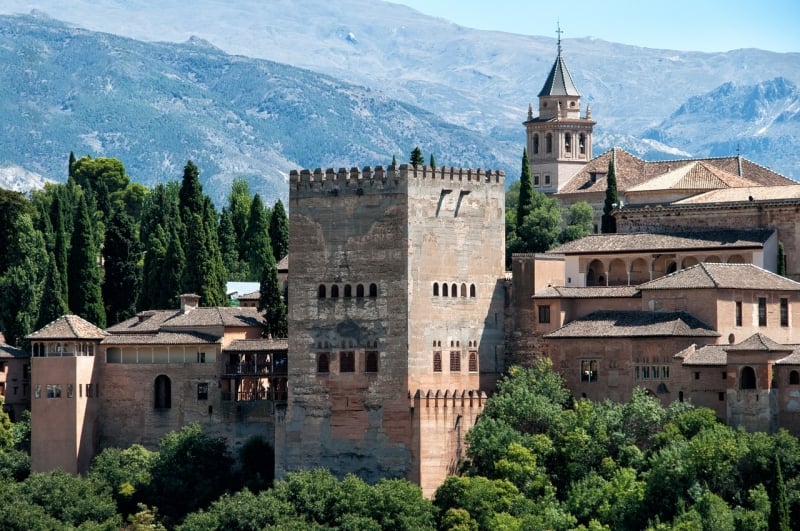
A number of Spain’s popular cities don structures that are inspired by Islamic architecture, which is clearly visible in Alhambra and the Cordoba Mosque. These historical elements offer unique aesthetics and stunning beauty that was once unmatched.
In addition, Spain was also a centre of knowledge and innovation and a number of surgical tools that we use today originated here during the Islamic era from a surgeon named Abul Qasim Khalad ibn al-Abbas al-Zaharawi or more famously known as al-Zahrawi.
If your visit to Spain comprises a tour of the country’s sprawling Islamic heritage, then you’re in for a remarkable trip. Here are just a few of the numerous attractions to look out for during your discovery of Moorish Spain.
Seville
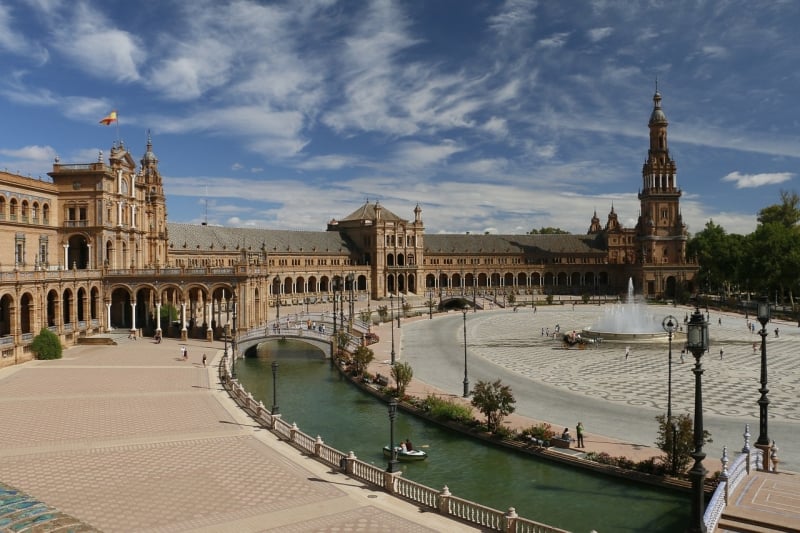
The Andalusian city of Seville has garnered a reputation among tourists for bullfighting, flamencos, tapas and over five hundred years of Islamic history. Once known as “Ishbiliya”, numerous fascinating Muslim heritage sites can be found throughout this stunning Spanish city. Among them are:
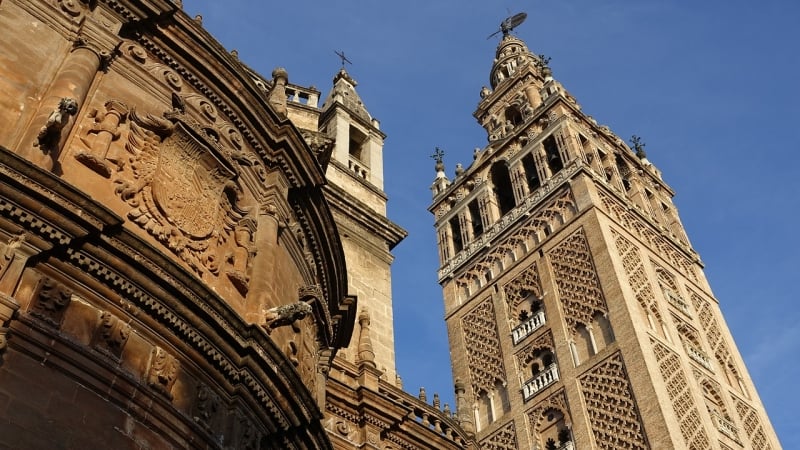
The Giralda – Constructed between 1184 and 1198 at the height of Almohad rule, this 90-metre-high decorated bell tower was once a minaret of the city’s mosque. It now remains a historical beacon of beauty and grandiosity, with delicate geometric patterns commonly observed throughout the Muslim world. The Giralda is the official symbol of Seville.
The Alcazar – Often overlooked by seekers of Andalusian Muslim heritage, the Alcazar you see today includes many additions built by Christian kings on the site of the original 10th-century Muslim fort. The architects of this stunning landmark were Muslims. The Mudejar Palacio de Don Pedro (the “jewel” in the Alcazar’s crown) is a clear example of Islamic influence and inside the Alcazar, Christian kings praised their Lord in the then-fashionable Arabic language, using inscriptions such as “Wa la ghalib ill Allah”: “There is no victor but God.”
Torre Del Oro – This 13th-century “Tower of Gold” overlooks the River Guadalquivir (from the Arabic “Wadi al Kabir”, or “the Great River”) and is also considered to be an Almohad construction. In the past, the Torre Del Oro is believed to have had a dome covered with golden tiles. Today, it is home to a maritime museum.
Cordoba
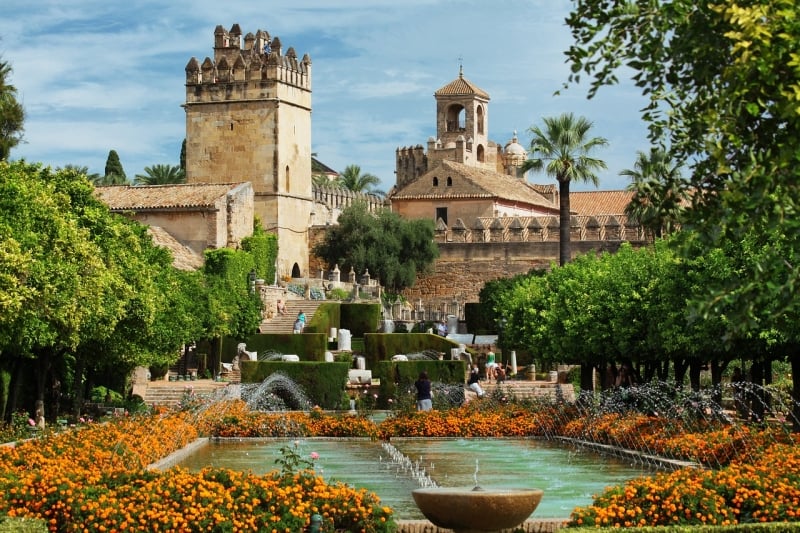
Cordoba is one of the few Spanish cities that showcases the country’s great Islamic past in all its glory. With a series of landmarks that hearken back to Moorish history, the city was also home to one of the world’s most influential Islamic scholars, Ibn Rushd, also known as Averroes.
“Averroes tour” by the Palacio del Bailio – As the birthplace of Ibn Rushd, it’s only fitting that Cordoba features a historical tour of this prominent historical figure. Palacio del Bailio, which is the city’s only five-star property, was a 16th-century noble’s mansion and estate. Today, it’s a monument with tours that not only show Cordoba’s highlights but also emphasise on its Moorish heritage. Ibn Rushd was a 12th-century Islamic judge, physician, mathematician and philosopher who served as an intellectual bridge between Islamic and Western thought. It was his commentaries on the works of Aristotle that (subsequently translated) are purported to have sown the seeds of Europe’s Renaissance.
Granada
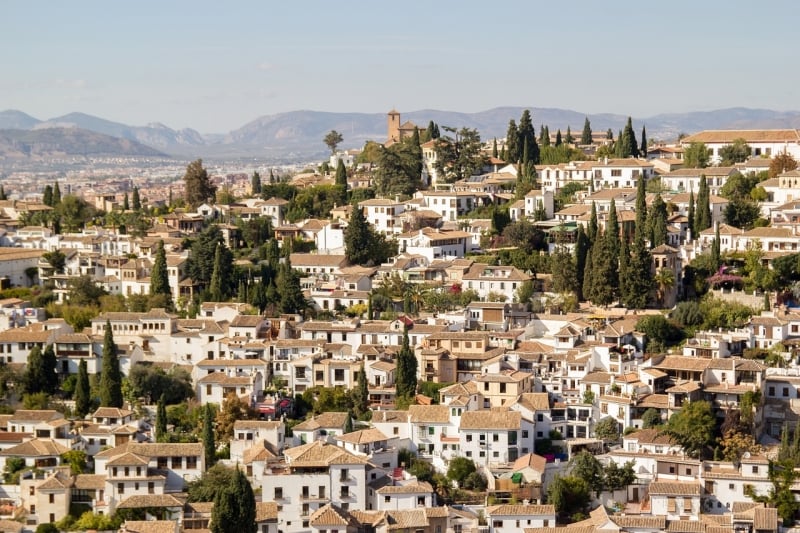
On an annual basis, Muslims from all around the world flock to the Spanish region of Andalusia due to the area’s prominent Islamic history. Within this region, Granada is considered to be one of the major cities, with a strong Moorish heritage and a close proximity to North Africa. It also provides a wide range of options for the Muslim traveller to enjoy halal food. Halal restaurants can be found in almost every part of the streets of Gran Via.
Alhambra Palace – The Alhambra Palace and its surroundings are considered to be the main attraction in Granada. Once known as a fortress called Alcazaba which was rebuilt by Muslims in the year 889 as a place for refuge, the castle was turned into a military base and eventually a royal residence.
Puerta De Siria (Halal Certified, No Alcohol served) – This Syrian restaurant can be found about five minutes away from the hustle and bustle of the city centre and can fit a maximum of fifteen people. Many consider the food here worth a trip to Puerta de Siria.
El Taj Halal (Halal Certified) – This eatery is a rather prominent and hard to miss halal food spot right on Gran Via street, serving a diverse range of Moroccan style delicacies that would impress anyone looking for some legitimate Muslim food.
Pad Thai Wok (Halal Certified, Alcohol served) – It isn’t easy finding a Halal Thai restaurant in Spain (let alone in some other parts of the world) but Pad Thai Wok offers just that. The popular meals at this eatery include Pad Thai, Satay and Chicken Yakhtai. It’s a great place to stop by for a quick lunch while exploring this magnificent city.




